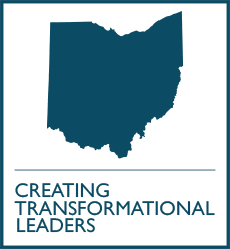Feb 2

Students Use Avatars to Present at Community Health Leadership Conference in Miami
Determination, persistence, optimism: those could be a few of the qualities that fueled students from around the country to participate in the virtual version of a conference held in Miami each year. Around 80 projects were accepted to be shown as poster presentations for the University of Miami Department of Community Service 2021 Community Health Leadership Conference.
Held virtually on Saturday, Jan. 23, the conference honored two projects by Northeast Ohio Medical University students.
Presenting via avatars
Anna Cherian, R.D., L.D., a third-year College of Medicine student at NEOMED, described the virtual experience as well organized, well executed, and “a very cool concept!”
She explained, “The conference used a platform called GatherTown and each person had an avatar they could move around various areas (beach, auditorium, poster session rooms, etc.) and view different posters. We were usually talking to one person at a time but we had up to five people in our poster session (other NEOMED students who popped in to say hi).
“In-person poster sessions may have more interactions with additional students, but I thought presenting to a judge virtually versus in person was very similar!
Second place honors went to third-year College of Medicine students Sohi Mistry and Alisha Gupta, along with second-year College of Medicine students Siddhartha Singh, Maahi Mistry, and Sanjay Jinka, for “A Survey Analysis of Telehealth Access to Geriatric Patients during COVID-19.” Mistry acknowledged Jinka as her co-researcher and credited Gupta, Singh and Maahi Mistry for successfully presenting the project, called ConnectNEO, at the daylong conference.
Mistry explained that the project ConnectNEO comprises a group of NEOMED students and preceptor/guide Mariquita Belen, M.D., assistant professor of geriatrics, who are interested in providing technological devices, virtual technological support for telehealth software and medical devices, and well-checks to geriatric patients in the community – specifically, at Summa Health Akron City Hospital (ACH) and the Direction Home Akron Canton Area Agency on Aging (DHAD).
“We conducted a survey of health care providers at both Summa Health ACH and DHAD and discovered that over 75% of the providers believe that most of their patients have difficulty using telehealth and medical devices. Over 80% of the providers state that a volunteer program to aid their patients in these aspects would be extremely helpful,” Mistry commented.
She added, “We hope to use this data as well as our resources at NEOMED to develop a student-led volunteer initiative to personally connect with geriatric patients struggling with access to healthcare during the COVID-19 pandemic. Our intention is to improve patient adherence and compliance to medical care as well as quality of life beyond the onset of COVID-19.”
The project is underway, as a recent story in The Pulse explained.
Virtual Patient Education Training Recognized
Third place at the conference went to third-year College of Medicine student Anna Cherian, fourth-year College of Medicine student Harshita Dudipala, fourth-year College of Pharmacy student Bhavika Patel, and second-year College of Medicine students Isabelle Mawby, Laura Harlan and Sneha Kandi for “Development and Implementation of Virtual Patient Education Training for Pharmacy and Medical Students at a Student-Run Free Clinic.”
Kandi explained, “Patient education sessions are a valuable tool to encourage patients to adopt healthier lifestyles and improve chronic disease management. Our project was centered around how we adapted our patient education training due to the COVID-19 pandemic.
“Before the pandemic, our training program consisted of each student submitting a patient education handout, getting trained on motivational interviewing, and eventually becoming a certified patient educator. When the pandemic hit, we had to adapt this to an online format. Teaching online was initially a challenge, but thanks to our great team of educators and the willingness of the students, we were able to create a program that would allow students to be able to develop better communication skills and continue providing quality care to our patients.
“Our main goal with creating this program was sustainability: We wanted a program that would continue to benefit the patients at the free clinic after all of us graduated. We are very impressed with and appreciative of everyone who has participated, and their eagerness to continue providing the same quality of care when transitioning from an in-person to a virtual platform.”
Photo: left, Sohi Mistry; right, Sneha Kandi

